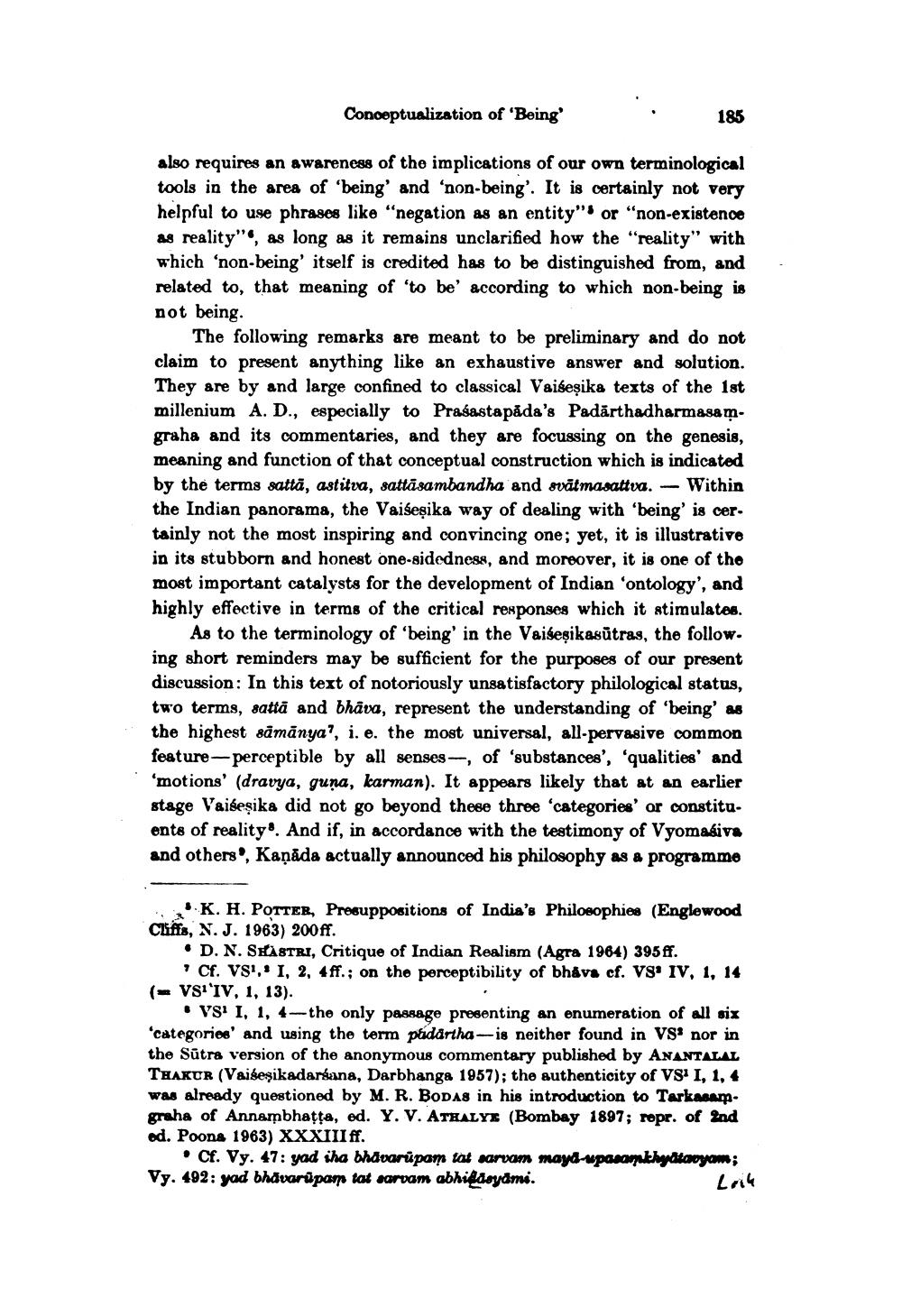________________
Conoeptualization of 'Being
185
also requires an awareness of the implications of our own terminological tools in the area of being' and 'non-being'. It is certainly not very helpful to use phrases like "negation as an entity" or "non-existence as reality", as long as it remains unclarified how the "reality" with which ‘non-being' itself is credited has to be distinguished from, and related to, that meaning of 'to be' according to which non-being is not being.
The following remarks are meant to be preliminary and do not claim to present anything like an exhaustive answer and solution. They are by and large confined to classical Vaiseșika texts of the 1st millenium A. D., especially to Praśastapäda's Padārthadharmasam. graha and its commentaries, and they are focussing on the genesis, meaning and function of that conceptual construction which is indicated by the terms sattă, astitva, sattasambandha and svátmasattva. - Within the Indian panorama, the Vaišeşika way of dealing with 'being' is cer. tainly not the most inspiring and convincing one; yet, it is illustrative in its stubborn and honest one-sidedness, and moreover, it is one of the most important catalysts for the development of Indian 'ontology', and highly effective in terms of the critical responses which it stimulates.
As to the terminology of being in the Vaiseşikasůtras, the follow. ing short reminders may be sufficient for the purposes of our present discussion: In this text of notoriously unsatisfactory philological status, two terms, sattā and bhāva, represent the understanding of 'being' as the highest sämänya?, i. e. the most universal, all-pervasive common feature-perceptible by all senses-, of 'substances', 'qualities and 'motions' (dravya, guna, karman). It appears likely that at an earlier stage Vaišeşika did not go beyond these three 'categories' or constituents of reality. And if, in accordance with the testimony of Vyomaćiva and others, Kanāda actually announced his philosophy as a programme
K. H. POTTER, Presuppositions of India's Philosophies (Englewood Cliffs, X. J. 1963) 200ff.
• D. N. SHASTRI, Critique of Indian Realism (Agra 1964) 395ff.
Cf. VS'. I, 2, 4ff.; on the perceptibility of bhävs cf. VS' IV, 1, 14 ( VS'IV, 1, 13).
. VSI I, 1, 4--the only passage presenting an enumeration of all six 'categories' and using the term pádártha -- is neither found in Vsnor in the Sūtra version of the anonymous commentary published by ANANTALAL THAKUR (Vaiseşikadarsana, Darbhanga 1957); the authenticity of VS I, 1, 4 was already questioned by M. R. BODAs in his introduction to Tarkasamgraha of Annambhatta, ed. Y. V. ATHALYE (Bombay 1897; ropr. of 2nd ed. Poona 1963) XXXIII ff.
Cf. Vy. 47: yad sha bhavaru pam tat sarvam mayd-upacarthydavyam; Vy. 492: yad bhavarüpar tat sarvam abhi doydmi.
Lorike




